Top News

June 4, 2012 ChotaTakamine
The Los Angeles based filmmaker Eric Watson is well known to the American film industry. He worked alongside successful director Darren Aronofsky. Watson has been creating challenging films.
In his early childhood, Watson lived briefly in Okinawa when his mother Shila Proctor took a nursing position at the military hospital.
“I lived in Okinawa for a year since I was five years old. I remember that I went to two different schools.”
Proctor, who is now based in Fairfax, California, came to be involved in supporting Vietnam antiwar GIs while tending to military patients in Okinawa.

On October 19, in front of the cafe in San Francisco, Ed Kinchley (left) and Larry Hendel.
Since returning to the United States, Proctor has been teaching at the School of Nursing of the University of California, San Francisco as Health Sciences Assistant Clinical Professor. She has also been involved in the Woman’s Liberation Movement, and activities helping indigent people.
With regard to the September 11 attacks, the War in Afghanistan and the 2003 invasion of Iraq, Proctor said, “I have an extreme amount of sympathy for the people who have lost their family members due to 9.11. On the other hand, the government of this country totally distorted and used it as a way to ignore a lot of problems that we have, and as a way of unifying people by bringing racism and ethnocentrism, which made us hate people from Iran and Iraq, the religion they practice, just for no reason.”
Proctor’s son echoed her concerns about US citizens being poorly informed, “Our society is not really aware of the wars we are involved in. Major newspapers do not mention and discuss them. The U.S. government works for the power establishment, where the people in power stay in power.” He also expressed strong support for the Occupy Wall Street movement.

In the early 1970s, in Iejima, Shoko Ahagon (left on the front row), the father of the Okinawan civil rights movement, and Ed Kinchley (right on the front row).
Proctor is no longer immersed in Okinawa’s anti-base movement, but a recent news article about the ongoing struggle brought back strong sentiments. “When I read the article about Okinawan people’s opposition to the U.S. military bases in Okinawa on the New York Times, I was outraged at what we are doing. I think the U.S. military bases should leave Okinawa.”
According to Watson, younger generations have a lot to learn from those who pioneered civil rights and anti-war movements. He said the sharing of knowledge and information between generations was important regardless of changing times.
“The organizational skills and a lot of knowledge gained in my mother’s generation during civil rights movements, and Vietnam War movements can be communicated to younger generation.”
Ed Kinchley and Larry Hendel, who live in San Francisco, came to Okinawa when it was still under US administration. Kinchley was shocked to see the sprawl of the bases on such a densely populated island, with non-military Okinawa wedged between miles of military land.
“I just remember when I was in Okinawa, one of the things that physically struck me was every place you go, you see the barbed wire fences. It was not clear if you were inside or outside of the bases in most of the times.”
Kinchley visited Japan as an exchange student of Waseda University, and belonged to Gaijin Beheiren, which was associated with Beheiren, the nationwide movement founded to support antiwar GIs. Kinchley visited Okinawa in 1970 and 1971. His first visit was in the aftermath of the Koza riot. By his second visit to Okinawa, the movement for reversion of Okinawa to Japan was gathering momentum.
After taking part in antiwar movements in Massachusetts and San Francisco, Hendel moved to Okinawa, and got involved in supporting antiwar GIs. Hendel has also been working for the labor union movement in Oakland, California since returning to the United States. While working as a social worker, Kinchley is also actively engaged in the union movement.
Asked about the issues of the U.S. military bases in Okinawa, Hendel said, “We do not hear about the presence of the U.S. Marines in the Pacific rim. It is just not in the news. But the article on the New York Times was an amazing piece. That idea that we still have the U.S. military bases in Okinawa is ridiculous.”
Kinchley was concerned about the social problems caused by hosting bases.
“The impact that so many bases have on local communities, and economies is crazy. It is also not safe to walk around at night when a bunch of drunk GIs are anywhere.”
(English translation by T&CT, Jane Barraclough)
Go to Japanese

May 21, 2012 ChotaTakamine
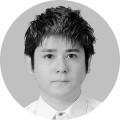 Around the time when Okinawa returned to Japanese sovereignty in 1972, American activists came to Okinawa to support the GI Antiwar Movement. In cooperation with mass movements already under way in Okinawa, they protested against the U.S. policy on Vietnam War, and the presence of the U.S. military forces in Okinawa. On the occasion of the 40th anniversary of Okinawa’s reversion from U.S. rule to Japanese sovereignty, I travelled around the United States to meet the people who were engaged in these antiwar movements.
Around the time when Okinawa returned to Japanese sovereignty in 1972, American activists came to Okinawa to support the GI Antiwar Movement. In cooperation with mass movements already under way in Okinawa, they protested against the U.S. policy on Vietnam War, and the presence of the U.S. military forces in Okinawa. On the occasion of the 40th anniversary of Okinawa’s reversion from U.S. rule to Japanese sovereignty, I travelled around the United States to meet the people who were engaged in these antiwar movements.

Shaap (left) and Ray were in Okinawa City back in the early 1970s.
Lawyer William Schaap, who currently lives in New York, is well-known for his long, ongoing investigation into devious activities of the Central Intelligence Agency (CIA). Shaap supported antiwar GIs as a lawyer during the 1970s.
He started his legal career on Wall Street. As a part of the projects initiated by an association of progressive lawyers and jurists, the National Lawyers Guild, Shaap went to Okinawa along with his partner, Ellen Ray shortly after Okinawa’s return to Japan in September 1972. There, he worked as a defense lawyer, representing Vietnam antiwar GIs.
Despite not being a military law expert, Shaap had no trouble winning cases against Defense in the anti-war climate of the 1970s, Shaap said,“I did not know anything about the military law. But it was very easy for us to drive the U.S. military crazy because we were not in the military. The military defense attorneys were limited in what they can do because they were part of the military. So, we were able to do pretty good for all of our clients.” Having a relationship with local people, Shaap and Ray spent one and half years engaged in preventing soldiers from participating in the war.

On October 26, 2011, at the Annie E.Casey Foundation, Bart Lubow, who is engaged in activities for reducing youth incarceration.
After coming back to the United States, Shaap and Ray moved to Germany and Italy, where the U.S. military forces were stationed at that time. They again provided legal support to antiwar GIs based on the experiences they gained in Okinawa. Then Shaap and Ray moved to Washington D.C., where they began investigating the CIA’s covert media agenda.
Shaap claimed the CIA exerted its influence over a wide network of journalists and media outlets, saying, “The CIA would have many journalists who were on their payroll. The CIA could influence the American public opinion by having their people writing stories on the big newspapers in the United States. But they were doing this all over the world. The CIA had very high contacts in big Tokyo newspapers. For example, the story written by the CIA became the editorial of one of the Japanese major newspapers.” During the Cold War, the CIA also had installations in Okinawa, forging a “deep relationship” between the CIA and the U.S. military facilities on the island.
Asked about the September 11 attacks, the War in Afghanistan and the 2003 invasion of Iraq, Shaap was adamant, “I think both wars were wrong. We do not believe the United States should interfere militarily. These are pointless because tens of thousands of Americans are getting killed, and hundred thousands of Iraqis and Afghanis have been killed. We are very much against the U.S. intervention at all.” Ray said, “Billions of dollars being spent for the wars is outrageous when people do not have jobs in this country.”
Bart Lubow, the director of the Annie E.Casey Foundation, participated in the GI Antiwar Movement in Okinawa in the beginning of the 1970s. Lubow reflected on that time, saying, “We lived in a house called People’s House in Koza (currently Okinawa City), which was a GI center, and did all kinds of activities for supporting antiwar GIs.”
As the anti-war movements gathered momentum all over the United States, there was little knowledge of anti-war movements within the U.S. military. Lubow and fellow activists published a newspaper for antiwar GIs, and had joint demonstrations with a Zengunro, the All-Okinawa Base Workers Union. Lubow recalls a rally attended by thousands, “We held this one giant concert rally. Maybe, 5000 GIs came to the rally.” In December 1971, at the Ryukyuan-American Friendship Center in Okinawa City, the Free Theater Association held the anti-war show, in which Hollywood actress Jane Fonda participated.
Lubow said that when he returned from Okinawa to the United States, he had fundamentally changed. Lubow currently works on campaigns to reduce youth incarceration.
(English translation by T&CT, Jane Barraclough)
Go to Japanese
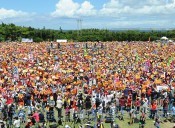
September 10, 2012 Ryukyu Shimpo
At 11:00am on September 9, a mass rally was held at the Ginowan Seaside Park to protest against the deployment of the MV-22 Osprey to the U.S. Marine Corps Air Station Futenma.
According to rally organizers, 101000 people took part in Ginowan, so combined with the participants in events in Yaeyama and Miyako, a total of about 103000 gathered for the rallies. This makes it the biggest U.S. base-related protest rally since Okinawa’s reversion to Japanese sovereignty. Okinawan people strongly oppose the planned deployment of the Osprey because of safety concerns about the aircraft in Japan following crashes this year. The rally adopted resolutions against the deployment of the Osprey to Futenma Air Station, and demanded the early closure of the base and the return of the land it occupies. Representing the all-party group reflecting the will of the Okinawan people, members of the rally executive committee plan to visit Tokyo on September 12 to demand that Prime Minister Yoshihiko Noda, Defense Minister Satoshi Morimoto and other government officials cancel the deployment. At the beginning of October they will also visit Washington, D.C. to request the cancellation of the deployment plan.
While 36 heads of municipalities and deputies participated in the rally in Ginowan, those of Yaeyama and Miyako participated in rallies held in their districts. Members of the prefectural assembly, Diet members from Okinawa, and heads of municipal assemblies lined up on stage.
Five joint representatives gave speeches. Masaharu Kina, head of the prefectural assembly, stated, “There have been Osprey crashes this year. I have to say that the aircraft is structurally flawed.” Takeshi Onaga, head of the Okinawa Mayors Association, asserted, “It is unacceptable to let the Osprey fly over the residents of Okinawa after these consecutive crashes.”
Atsushi Sakima, mayor of Ginowan, which hosts Futenma Air Station where the Osprey is scheduled to be deployed, said, “Bringing them here will increase the burden on the residents of Ginowan. We cannot be assured of their safety, so it is unacceptable to deploy these aircraft on the base.”
Governor of Okinawa Hirokazu Nakaima did not attend the rally, but instead sent a message to those who did. When they heard the message, the participants yelled out in indignation, transforming the scene into tumultuous uproar for a short time.
Yoshikazu Tamaki, head of the executive committee, proposed to request to the heads of municipalities in Japan that could be influenced by the Osprey deployment, that they adopt resolutions, also to hold protest rallies in front of the gate of Futenma Air Station every weekend, and to conduct a campaign to collect signatures. The end the rally, Toshiyasu Shiroma, head of the town and village assembly, urged in attendance to shout “Ganbaro!” three times.
The rally was co-hosted by the 31 organizations that make up the executive committee and another 153 organizations. The participants wore red-colored clothes and accessories to represent showing a “red card” to the U.S. and Japanese governments for promoting the deployment of the Osprey.
(English translation by T&CT, Mark Ealey)
Go to Japanese

September 9, 2012 Ryukyu Shimpo
On September 3, in Montreal, Canada, the Japanese-Canadian movie Karakara, which was produced by Okinawan filmmaker, Takako Miyahira, won the Public Award for the most popular Canadian feature film and the Openness to the World Award at the 36th Montreal World Film Festival. Claude Gagnon directed the movie, which was filmed entirely in Okinawa.
The movie the most appreciated by the audience receives the Public Award for the most popular Canadian feature film and the Openness to the World Award is given to the movie that disseminates a diversity of cultures to the world. This is the first time that a movie featuring Okinawa has won the award in the festival since The Crying Wind won the Innovation Award in 2004 and it is also the first time that a movie dealing with Okinawa won more than one award at the festival.
According to the Bitters End, the company that distributed the film, the festival highly appreciated the movie, and stated that it skillfully depicted the process in which the characters transcend individual and cultural boundaries to understand each other.
Miyahira commented, “As the charm of Okinawa fascinated Canadian audiences through the movie, I think that the culture of Okinawa can replenish people all around the world.” The film depicts retired professor Pierre, who is in his 60s, and at a crossroads in his life, making a trip to Okinawa, where he meets Junko, a housewife. The two characters reflect on their lives. Gabriel Arcand played Pierre and Youki Kudoh played Junko.
The movie was shot in Naha and Izena. It included a scene of weaving bashofu, which is made from the fibers of a type of banana tree, in Ogimi. This is the first time that Japan and Canada have officially collaborated to produce a movie. Okinawan companies supported the production by investing in the project. The movie is scheduled to be screened at theaters nationwide in January, 2013. While another Japanese film, starring Ken Takakura, Anatae (Dearest), was given special mention by the jury, the Grand Prix des Americas went to Turkish movie Where the Fire Burns.
Terminology: The Montreal World Film Festival
The festival was founded in 1977, and is one of the largest film festivals in North America accredited by the International Federation of Film Producers Association. It annually screens more than 350 movies and attracts 250000 visitors. The Japanese movie Okuribito (Departures) has won the top prize at the festival.
(English translation by T&CT, Mark Ealey)
Go to Japanese
August 23, 2012 Ryukyu Shimpo
On August 22, the Jalan Research Center, which is affiliated to the travel division of Recruit, a major company in Tokyo, released the results of Jalan Travel Research 2012. It provides a ranking for prefectures in eight categories, including the new category of tourism information services. Okinawa was ranked top in four categories such as that of local hospitality. Okinawa has increased its number of first places to four this year, from two in 2011. It achieved second place in another four categories.
In addition to hospitality, Okinawa came first in the categories for the prefecture that has many attractive local products and souvenirs, for that of having many spots and facilities where adults can enjoy themselves, and for the accessibility and usefulness of information for tourists.
For the category of locations for adults, there was a tie between Chiba and Okinawa, which returned to the top spot for the first time since 2009. Okinawa was placed first and second in all categories, which indicates that it is a very popular area to visit and stay for tourists.
For the prefecture that people like to go on trips using low cost carrier airlines, Okinawa was the highest with 35.6 percent, followed by Kyushu with 28.4 percent and Hokkaido with 28 percent.
In the category for appealing local products, in comparison with other prefectures Okinawa has many local dishes and products such as Okinawa soba and sea grapes. In the category for local hospitality, people answered taxis and drinking spots in addition to hotels and sightseeing locations.
Many people chose downtown areas in the category of spots for adults. In the category for useful tourism information, pamphlets in hotels and the services of staff in accommodation facilities and taxi drivers were cited as being valuable to tourists.
The four categories that Okinawa ranked second in are as follows: a prefecture which has many local delicious foods; many attractive accommodation options; many spots and facilities where children can enjoy themselves; and many spots and facilities where young people can enjoy themselves.
Through the Internet in April, the Jalan Reseach Center surveyed approximately 15800 tourists nationwide about domestic travel in fiscal 2011.
(English translation by T&CT, Lima Tokumori and Mark Ealey)
Go to Japanese
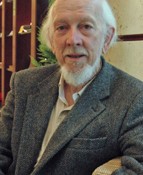
September 09, 2012 By Gavan McCormack
Great issues are at stake in the Osprey contest and the 5 August Meeting. After four decades of lying to, discriminating against, and betraying Okinawa, time and again, decade after decade, the governments of Japan and the United States now seem to have provoked it to an intolerable degree. By determining to impose on it something that the people of Okinawa say they will not accept, they substitute authoritarianism for democracy.
At the Ginown City protest meeting in June 2012, Shinjo Yoshitaka, the president of heads of the neighborhood community associations in Ginowan City, spoke of Okinawa’s culture of enduring up to a certain limit, beyond which the endurable becomes unendurable (nijitan nijitan nijiraran). His words distilled Okinawa’s pain. Now is such a point, when either the national government or the people of Okinawa must submit. The odds in favour of the state and against the people are of course huge, but for nearly 20 years the people have held the state at bay, blocking one after another design. This time the stakes are higher than ever and the outcome will have a profound effect on Japanese democracy, the Japan-US relationship, and the world.
Two decades after the end of the Cold War, the relationship between Tokyo (backed by Washington) and Okinawa resembles nothing so much as that between Moscow and Budapest or Warsaw at the height of the Cold War. Okinawan views are as much respected and listened to in Tokyo and Washington today as once Hungarian and Polish sentiments were respected in Moscow.
After decades of struggle, however, on these issues there is no longer an Okinawan “government” and “opposition.” Local government heads and assemblies, social and citizen groups are one, and it is the conservative Governor who suggests that if the Osprey are so safe they could be deployed to Hibiya Park or Shinjuku Gyoen. This is no longer an opposition movement but a prefecture in resistance, saying “No.” Japanese history has no precedent for this.
There is of course much more at stake than the Osprey. The Okinawan movement that says “No” to the Osprey says “No” also to the Futenma substitution project at Nago and “No” to the Osprey Helipad construction project at Takae. It also is deeply sensitive to other signs of intention to militarize the Southwestern islands in general and turn it into a front-line of confrontation with China: to construct a new (Self-Defence Force) base on Yonaguni, to have US and Japanese forces gradually merge and share the existing bases (in the name of “bilateral cooperation”), and to turn Shimojishima airport on Miyako Island and Mageshima in Kagoshima Prefecture into bases.
When the DPJ abandoned one by one its 2009 electoral pledges and began to morph into a clone LDP, mainland Japan sank into a stupor of political disillusion, but Okinawa returned to struggle with renewed energy. The local government elections and the All-Okinawa protest meeting of 2010 were expressions of its determination. Wikileaks and Mitsuyaku helped by shedding further light on the nature of the state and the Ampo system. They showed the lies and deceit on which the system rested, from the initial false promise of a reversion that would be “no nuclear weapons and on a par with the mainland” (kakunuki hondonami) through the years of evasion or manipulation of various laws (especially the environmental law) and the consistent discrimination against Okinawa, to Noda’s false promise of “burden lightening.”
DPJ governments began to show even greater servility to Washington and greater hardness to Okinawa than their LDP predecessors. Prime Minister Noda’s admission that “Once the American government has decided on deployment, there is no point in us going on about whether to do this or do that” was a rare, public admission at the highest level of the humiliating and clientelist (zokkoku) nature of the US-Japan relationship. However, by endorsing the Pentagon plan to deploy the Osprey not only in Okinawa but throughout Japan, they stirred the awakening of an “Okinawan” spirit of resistance on a national scale.
Even some of those most faithful to Washington now call for the deployment to be delayed, not because they believe in the sovereignty of the people but because they are afraid. They fear the Osprey struggle has the potential to grow into a nation-wide, anti-base and anti-Ampo movement, a struggle that might threaten Ampo itself. They now promise to investigate and explain, but ultimately their commitment is to enforce the Washington-Tokyo will. In any case, post 2011, explanations from Tokyo, whether on nuclear matters or on Okinawa matters, have little credibility. It is not for Tokyo to explain more or better but to apologize and to withdraw.
Today’s Okinawa struggle is a root a struggle over how Japan is governed and how it should be governed. In a rapidly changing world in which the US is losing both its economic and its moral authority, how can it be in the national interest for Japan to cling to its client state dependence on the United States and to steadily militarize? The anti-militarist Okinawan struggle constitutes a precious resource, pricking the national conscience and spurring mainland Japan to greater civic courage.
Gavan McCormack is an Australian-born researcher specializing in East Asia who is currently Emeritus Professor of the Australian National University. His main research interest is in “modern Japanese (and East Asian) political, intellectual, and environmental history.” He is also a coordinator of The Asia-Pacific Journal: Japan Focus. He was awarded (jointly, on behalf Japan Focus), Inaugural Ryukyu Shimpo Ikemiyagi Shui Prize for promotion of international understanding of Okinawa, September 2008. His recent books include The Emptiness of Japanese Affluence; New York, M.E. Sharpe, Japanese edition from Misuzu Shobo and Client State: Japan in the American Embrace, New York and London, Verso, Japanese edition from Gaifusha.
Go to Japanese
September 9, 2012 Ryukyu Shimpo
For the people of Okinawa, today is the day of an historic mass rally. In this rally the young and the old, men and women and people of all walks of like will participate to express their opposition to the deployment of the MV-22 Osprey vertical take-off and landing transport aircraft to U.S. Marine Corps Air Station Futenma. People who value the spirit of democracy and the democratic process are filled with a sense of impending crisis. This thoroughly bipartisan rally will be the first motion that will culminate in a huge wave of opposition. The Okinawan people will not accept the “inherently defective aircraft” that threatens their lives, property, safety and security. Washington and Tokyo are advised to take this situation seriously, because people are standing up to take up action over the sanctity of life – the Government needs to understand that this rally is a committed cry of the people. Okinawans have applied themselves many times in various ways in an attempt to resolve base-related issues since the end of the war. Now, resentment towards the military-first policy that the governments of Japan and the United States have foist upon them has built up to a broader and deeper extent than ever before.
Military hides MV-22s accident report
The U.S. Marine Corps has confirmed that since 2006, among the aircraft it operates, a total of 31 accidents involving the Osprey have occurred. However, despite the House Committee demanding in 2009 that records be divulged, the Marine Corps has continually refused to provide details of the status of its MV-22 fleet, including aircraft damaged and destroyed in accidents. Some experts even speculate that the Marines are intentionally hiding the MV-22’s accident reports. If we count the accidents involving the CV-22 type Osprey aircraft belonging to the Air Force the number of accidents doubles.
On July 1, at his meeting with Defense Minister Satoshi Morimoto who was on a visit to Okinawa, Governor Hirokazu Nakaima criticized the Status of Forces Agreement with its inequalities that allow the U.S. military to exercise extra-territorial rights when its personnel on active duty cause accidents or incidents. The governor also spoke of his concern about the deployment of the MV-22 squadrons, saying, “All U.S. bases will be closed immediately if the government quotes the Status of Forces Agreement in order to operate dangerous equipment in densely populated areas.”
In Okinawa, U.S. military bases are located very close to residential areas, so a crash could cause a catastrophe at any time. The MV-22 squadrons will operate in an area that includes at least 25 cities, towns and villages. The wrath of residents would know no bounds if a crash were to occur that results in the loss of life.
A former chief analyst at the Institute for Defense Analyses who has in-depth knowledge on the performance of the Osprey, and experts belonging to an independent non-profit organization, the Project On Government Oversight, have pointed out the safety issues of the aircraft, and there is ongoing comment from people involved in Osprey crashes about organizational cover-ups and the downplaying of the crashes.
Tokyo continues to blindly emphasize the merits of deploying the Osprey to Japan despite ongoing problems with its safety. The Japanese Government follows the lead of the United States Government without question, as though it were a tributary nation of the United States, rather than an independent nation.
After the war, Okinawa faced many difficulties because the U.S. military forces seized Okinawan people’s land at the point of a bayonet and bulldozed everything in its path to construct military bases. To add insult to injury, U.S. military personnel further trampled on Okinawan people’s human rights by raping Okinawan women. In 1959, a military aircraft crashed into Miyamori Elementary School in Ishikawa, killing 18 pupils.
The deployment of the Osprey to Futenma essentially represents an “indiscriminate attack” on the Okinawan people among the many inhumane acts perpetrated in Okinawa by the U.S. military forces. If the Japanese and the U.S. government force the deployment of the Osprey aircraft on the prefecture, the Okinawan people will undoubtedly come to oppose not only the U.S. Marine
Corps but all four arms of the U.S. military.
Suicide of a Democracy
There are 20 airspaces and 28 water areas used for training under the U.S. military administration around the islands of Okinawa Prefecture. Local people are not allowed to freely use the land, sea and sky that belong to Okinawa. Taking advantage of the Status of Forces Agreement, which grants privileges to the U.S. forces in Japan, U.S. forces exert extra-territorial rights to an inordinate extent. Does the U.S. government think that Okinawa is an American colony?
After Okinawa’s reversion to Japanese sovereignty, there have been 522 accidents, including U.S. military aircraft crashing, or making emergency landings. Up until the end of December 2011 those accidents had caused 34 casualties with another 24 people missing. The fiery explosion of a U.S. Marine helicopter that crashed onto the campus of Okinawa International University in the summer of 2004 is still fresh in our minds.
There has been nationwide protest against the plan for the MV-22 squadrons to be deployed to Futenma. It is safe to say that the Osprey would be nothing less than an “unwelcome guest.” If the U.S. government ignores the will of the Okinawan people, and protects the vested interests of U.S. Marine Corps, that stance would be tantamount to the suicide of national democracy.
Before the relationship between Japan and the United States falls apart at the seams, the Japanese and the U.S. governments should abandon the deployment of this flawed aircraft to Futenma, and the planned low-altitude Osprey flight-training over the main islands of Japan. The governments should return to the start line on the Futenma issue, which is to remove the dangers posed by the base, and seriously consider closing, removing and relocating the facilities at Futenma outside of Japan and Okinawa.
We cannot help but feel that the world is now asking us, the people of Okinawa, about our historical standpoint and our broader viewpoint. Japanese government leaders express rivalry with the emerging China. Should Okinawa play the role of the cornerstone of the Pacific from a military standpoint, or should we play the role of the cornerstone of the Pacific from a peaceful perspective in order to serve as a bridge between Asian nations. We would like the people of Okinawa to think of this rally as the starting point for action that shapes a future of their choice.
Go to Japanese
August 30, 2012 Ryukyu Shimpo
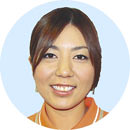 On August 29, Mayor Takeshi Onaga announced that he is to present the Naha City Honor Award to 22 year-old Mika Miyazato, who was born in Naha and claimed her first LPGA Tour title as the youngest winner from Japan. She won the Safeway Classic Presented by Coca-Cola on August 19. The award ceremony will be held in December when she is back in Okinawa. “I want to give more energy to people. I will work harder.”
On August 29, Mayor Takeshi Onaga announced that he is to present the Naha City Honor Award to 22 year-old Mika Miyazato, who was born in Naha and claimed her first LPGA Tour title as the youngest winner from Japan. She won the Safeway Classic Presented by Coca-Cola on August 19. The award ceremony will be held in December when she is back in Okinawa. “I want to give more energy to people. I will work harder.”
Mayor Onaga said, “She has given dreams, hopes, confidence and pride to many people, including youth. We want to honor her achievements.” Miyazato graduated from Matsushima Junior High School and Konan Senior High School. In 2004 she became the youngest player in history to win the Japan Women’s Amateur Golf Championship and has received the Naha Special Award for Youth three times.
The Naha City Honor Award is given to individuals or groups who have enhanced the reputation of Naha throughout Japan, as well as giving bright dreams and hopes to the community. To date, one group and seven individuals have received the award.
Most recently, in September 2010, Konan Senior High School received the award for its achievement in winning both the spring and summer tournaments in the high school baseball at Koshien. Mika Miyazato is the most recent individual winner since pop singer Namie Amuro received the award in July 2000.
(English translation by T&CT, Mark Ealey)
Go to Japanese
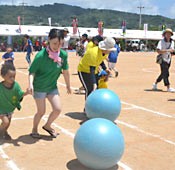
August 22, 2012 Ryukyu Shimpo
On August 12, the 5th Agaritukume Olympics were held on Ojima Island, Tamagusuku, Nanjo. The Agaritukume family has held this event once every four years in order to create an opportunity to see all their relatives, including families who live abroad, in other prefectures in Japan and in Okinawa. At this year’s Agaritukume Family Olympics, about 240 people, from children to elderly people, gathered to deepen their friendship through a variety of games such as medley relays and ball-rolling.
The people are the family members of the late Fujihachi and Ushi Minei from Ojima Island. In the beginning just the young people held an athletic meet but from the year of the Atlanta Olympics, 1996, all the relatives of the family have participated in the games. Since then, they have held the family sports meet in the year of the Olympics.
Fujiichi Minei, 82, a son of Fujihachi and Ushi, has 17 grandchildren and great-grandchildren. He said, “Playing with our grandchildren and great-grandchildren helps to keep me healthy. I’m looking forward to the next Olympics in 2016.”
Osamu Ashitomi, 48, Fujihachi’s great-grandchild from Kanagawa who took part with his family, said, “The Olympics are a good opportunity to deepen relationship among our relatives. I enjoy seeing all the family members who are well.”
(English translation by T&CT, Lima Tokumori and Mark Ealey)
Go to Japanese
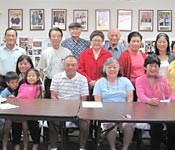
August 27, 2012 Sadao Tome Correspondent of Ryukyu Shimpo
The History Committee of Okinawa Association of America, Hokubei Okinawa Kenjinkai, has interviewed five members from Hawaii and four from Central and South America to find out why they migrated to the United States. The United States has been called “the salad bowl of the world,” because its people came from many different countries around the world, and so have a diverse range of ethnic backgrounds. The Kenjikai members each have their own personal histories and reasons for migrating to the U.S. from Hawaii and Central and South America.
During 1950s and 1960s, when the economy fell into recession in Hawaii, many Uchinanchu moved from there to South California. However only a small number of them joined the Kenjinkai.
There are some successful third-generation Okinawan such as Jon Shirota, Masao Yamashiro, and John Nakamatsu whose grandfathers are from Okinawa and parents from Hawaii. Jon Shirota became a renowned playwright for writing Leilani’s Hibiscus. Columnist Masao Yamashiro published books such as Kibei Nisei and Toi Taigan. Jon Nakamatsu won the first place in the 10th Van Cliburn International Piano Competition in 1997.
All of them currently live in California. The late Charly Kamiya and his son Ken Kamiya served as president of the Kenjinkai. Ken’s daughter, Helene Shimane has contributed to the Kenjinkai in various fields. They also moved from Hawaii.
Migrants from South America also have a tragic side in their histories. During World War II, more than 2300 Japanese in Central and South America were forcibly relocated to the U.S. and placed in internment camps on suspicion of espionage. Eighty percent of the detained people were Japanese and 50 percent of those Japanese were Okinawan.
In 1998, almost ten years after the U.S. government paid compensation to former internees, the prisoners from Central and South America received an apology and compensation from President Bill Clinton. The efforts of Robin Toma, an attorney whose father is from Okinawa, led to the issue being resolved. He represented the plaintiffs, including Carmen Mochizuki and Henry Shima. Carmen Mochizuki is a second-generation Nago Okinawan from Peru. Henry Shima is also from Peru and a second-generation Haneji Okinawan. Toma’s father is from Okinawa and his mother from Gifu Prefecture. He is an attorney and specializes in human rights protection.
Nine members gathered for the interview. They are all second-generation Japanese from Hawaii and South America such as Argentine, Bolivia, Brazil, and Peru, and understand a little Japanese. Most of them went to South California in search of a better life. By joining the Kenjinkai, they found a home as Shimanchu.
(English translation by T&CT, Megumi Chibana and Mark Ealey)
Go to Japanese

August 25, 2012 Fumiaki Jahana of Ryukyu Shimpo
Odac, a distributor based in Kin of mushrooms, fruit and vegetables, has been promoting the export of Okinawan mushrooms to Asia. In addition to Thailand and Singapore, there is an increasing demand in Taiwan. Since this April, every month they have exported about ten tons of buna-shimeji or brown beech mushrooms. The company aims to establish a system that enables them to supply their products throughout the year.
Cooperating with the three companies, Kunigami Kinoko-en, Nakijin Kinoko-en and Kinoko Center Kin, Odac sells brown beech mushrooms and enokidake or hackberry mushrooms to supermarkets in Okinawa. They have about a 60 percent share of the Okinawan market. However, competition between their products and imported produce is very keen in the market and sales of their products in Okinawa have been leveling off in the past year. For this reason, they have been looking to establish new markets abroad.
According to the company, in Taiwan there is demand for about 60000 to 70000 tons of mushrooms per year, but local Taiwanese producers can supply only about 25000 tons. In the background to this, the production volume has been declining in Taiwan because of cheaper imports from China and Korea.
While Japanese mushrooms have a competitive advantage because of their high quality, they are relatively expensive. Nevertheless, Odac has strengthened sales in Taiwan since last April. Market research suggests that the white shimeji mushroom is particularly popular, and many customers buy many large packs of mushrooms. During the period from spring to summer when the market demand in Okinawa falls, the company has started to export its products to Taiwan and has achieved stable monthly supplies.
To export to Thailand and Singapore, Odac uses the All Nippon Airways international airfreight service at Naha Airport, which is a hub for air transport. The company is now selling two tons per month to Thailand. It has previously delivered its produce to Taiwan by ship. Odac hopes that direct flights between Okinawa and Taiwan will provide a stable transportation option in future, because exports to Taiwan are growing through a year. Katsunori Ito, the head of the company said, “We can meet customer demand even more effectively, if we can dispatch frozen products directly to Taiwan. I want to use Okinawa’s geographical advantages to expand markets in Asia.”
(English translation by T&CT, Lima Tokumori and Mark Ealey)
Go to Japanese

 Around the time when Okinawa returned to Japanese sovereignty in 1972, American activists came to Okinawa to support the GI Antiwar Movement. In cooperation with mass movements already under way in Okinawa, they protested against the U.S. policy on Vietnam War, and the presence of the U.S. military forces in Okinawa. On the occasion of the 40th anniversary of Okinawa’s reversion from U.S. rule to Japanese sovereignty, I travelled around the United States to meet the people who were engaged in these antiwar movements.
Around the time when Okinawa returned to Japanese sovereignty in 1972, American activists came to Okinawa to support the GI Antiwar Movement. In cooperation with mass movements already under way in Okinawa, they protested against the U.S. policy on Vietnam War, and the presence of the U.S. military forces in Okinawa. On the occasion of the 40th anniversary of Okinawa’s reversion from U.S. rule to Japanese sovereignty, I travelled around the United States to meet the people who were engaged in these antiwar movements.







 On August 29, Mayor Takeshi Onaga announced that he is to present the Naha City Honor Award to 22 year-old Mika Miyazato, who was born in Naha and claimed her first LPGA Tour title as the youngest winner from Japan. She won the Safeway Classic Presented by Coca-Cola on August 19. The award ceremony will be held in December when she is back in Okinawa. “I want to give more energy to people. I will work harder.”
On August 29, Mayor Takeshi Onaga announced that he is to present the Naha City Honor Award to 22 year-old Mika Miyazato, who was born in Naha and claimed her first LPGA Tour title as the youngest winner from Japan. She won the Safeway Classic Presented by Coca-Cola on August 19. The award ceremony will be held in December when she is back in Okinawa. “I want to give more energy to people. I will work harder.”


 Webcam(Kokusai Street)
Webcam(Kokusai Street)


